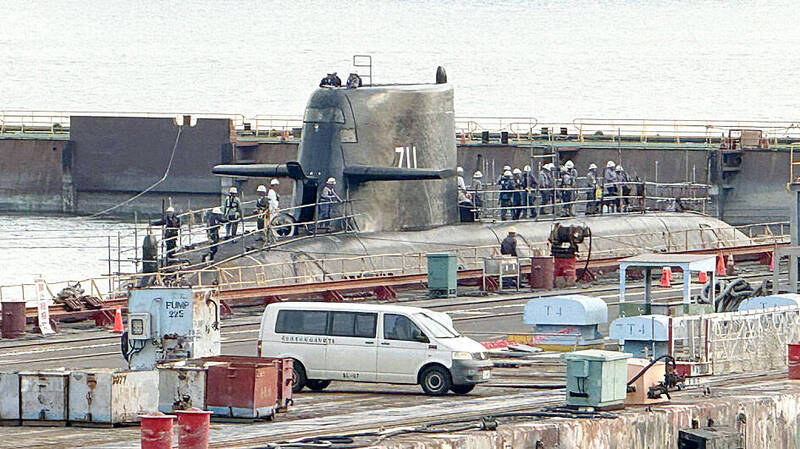Lifestyle
Taiwan’s First Indigenous Submarine Moves for Diving Tests

Taiwan’s first indigenous defense submarine, the Hai Kun (海鯤 or Narwhal), has been moved from a dry dock to Pier 91 at Kaohsiung Harbor. This transition marks the beginning of preparations for diving tests, although the shipbuilder, CSBC Corp, has declined to comment on specific details, stating only that operations are proceeding as planned.
The Hai Kun has already undergone extensive sea trials at the CSBC shipyard. Sources indicate that moving the vessel to Pier 91 is a critical step in facilitating submergence trials expected to occur before the end of this month. Delivery to the Taiwanese navy is slated for November 2023.
During the initial testing phases, the Hai Kun completed various at-sea systems tests, including periscope functionality. According to CSBC, system parameters will be adjusted based on the data collected during these trials. After the third phase of testing, which concluded on July 8, 2023, hyperbaric tests and underwater systems calibrations were performed before the submarine was transferred to the dry dock.
The submarine, a prototype for a future fleet of indigenous vessels, began its first tests on June 17, 2023. These tests evaluated propulsion, steering, power systems, ventilation, telecommunications, and navigation instruments. The second round of tests, conducted on June 26, 2023, focused on at-sea systems integration, vessel controls, and operational capabilities.
The move to Pier 91 coincides with the anticipated transition in leadership at CSBC. Board member Chen Cheng-hung has been named the new chairman, following the resignation of Huang Cheng-hung, who cited family reasons for stepping down. Huang will take on a lecturing position at National Cheng Kung University.
As the Hai Kun was relocated, the CSBC Endeavor Manta, Taiwan’s first military-grade uncrewed surface vehicle (USV), was also observed in the vicinity. The purpose of its presence—whether for patrol or testing—remains unclear. The USV features a trimaran hull designed for enhanced stability in rough seas, measures 8.6 meters in length, and 3.7 meters in width. It can carry a payload of up to 1 tonne, which may include lightweight torpedoes and high-powered explosives, and it boasts a top speed of 35 knots (approximately 64.8 km/h).
As Taiwan continues to advance its military capabilities with the development of the Hai Kun and other defense technologies, the successful completion of upcoming diving tests will be a significant milestone in the country’s efforts to bolster its naval strength.
-

 Lifestyle4 months ago
Lifestyle4 months agoHumanism Camp Engages 250 Youths in Summer Fest 2025
-

 Business5 months ago
Business5 months agoKenvue Dismisses CEO Thibaut Mongon as Strategic Review Advances
-

 Sports4 months ago
Sports4 months agoDe Minaur Triumphs at Washington Open After Thrilling Comeback
-

 Sports5 months ago
Sports5 months agoTupou and Daugunu Join First Nations Squad for Lions Clash
-

 Top Stories5 months ago
Top Stories5 months agoColombian Senator Miguel Uribe Shows Signs of Recovery After Attack
-

 World5 months ago
World5 months agoASEAN Gears Up for Historic Joint Meeting of Foreign and Economic Ministers
-

 Health4 months ago
Health4 months agoNew Study Challenges Assumptions About Aging and Inflammation
-

 Business5 months ago
Business5 months agoOil Prices Surge Following New EU Sanctions on Russia
-

 Entertainment4 months ago
Entertainment4 months agoDetaşe-Sabah Violin Ensemble Captivates at Gabala Music Festival
-

 Entertainment4 months ago
Entertainment4 months agoBaku Metro Extends Hours for Justin Timberlake Concert
-

 Top Stories5 months ago
Top Stories5 months agoRethinking Singapore’s F&B Regulations Amid Business Closures
-

 Business5 months ago
Business5 months agoU.S. House Approves Stablecoin Bill, Sends to Trump for Signature









